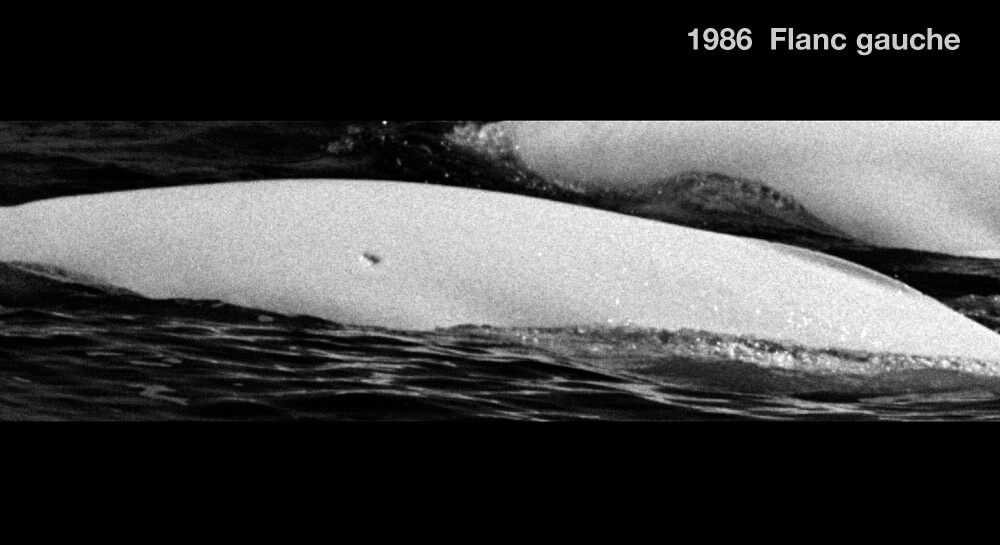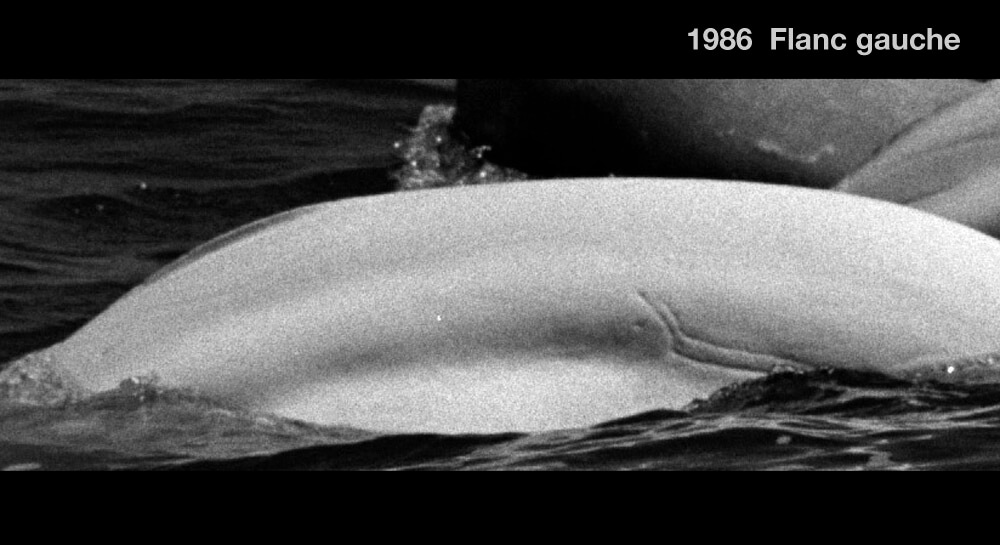Octave
Beluga


Adopted by Peinture Internationale
-
ID number
DL0007
-
Sex
Unknown
-
Year of birth
Before 1970
-
Known Since
1986
Distinctive traits
Octavian can be identified from the left flank only by the small scar on the front flank and the three slight cuts in the dorsal crest.
Life history
Observed only once in 1986, Octave was completely white. It was therefore born before 1970.
The lack of data on its habits and affiliations prevents us from identifying the area it frequents.
Octave was observed only once, on July 1, 1986. It is a white adult. We don’t know its sex, but on this occasion it was accompanied by females – Tadeus, Corsaire and Yogi – from the Saguenay Fjord community, as well as a large number of juveniles. There are two other communities of females : on the south shore and in Kamouraska. Each community is attached to its own territory, and there are few exchanges between them. Female belugas become experts on their territory, knowing its resources well and able to provide efficiently for their newborn calves.
Regularly seen with...
Observations history in the Estuary
Years in which the animal was not observed Years in which the animal was observed
Latest news
Octave’s only sighting goes back more than 25 years. Is it dead? Has it remained invisible to researchers for all that time? One thing’s for sure, its story remains a valuable source of information that helps us better understand this fragile population.
Sponsor
Peinture Internationale adopted Octave, Aile Joyeuse, Blanche-Neige, Oreillette, Patte d’Oie et Vagabonde (1988).

